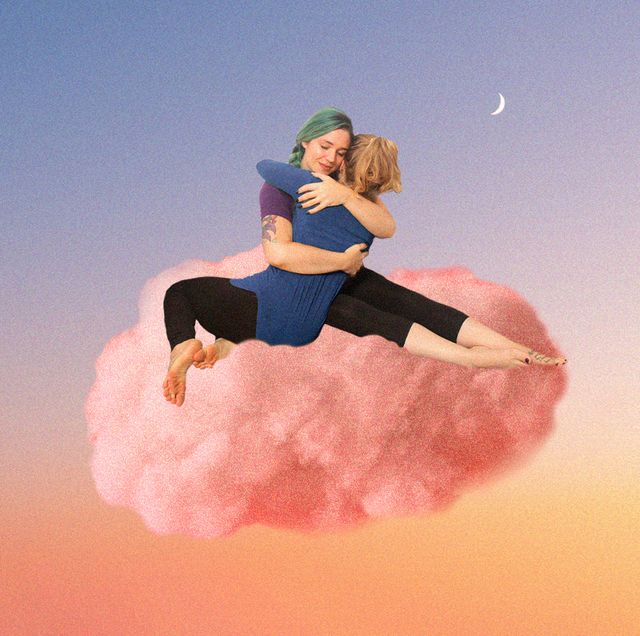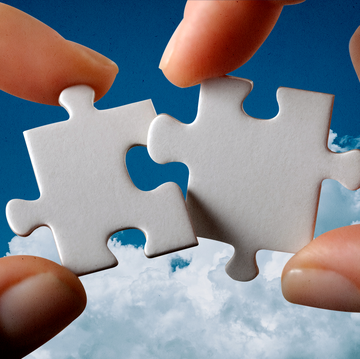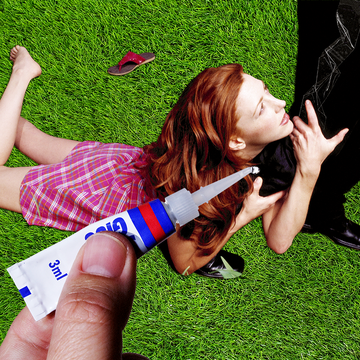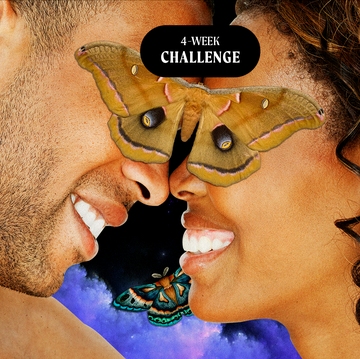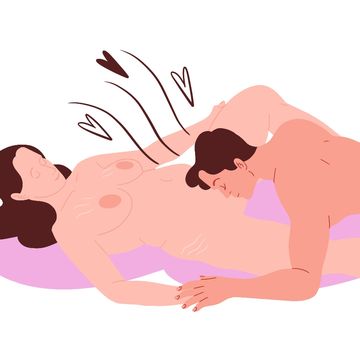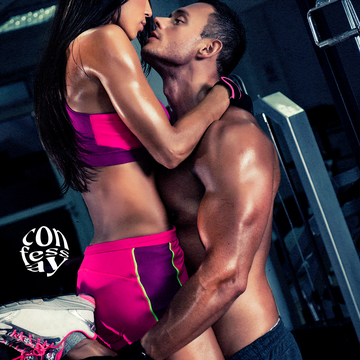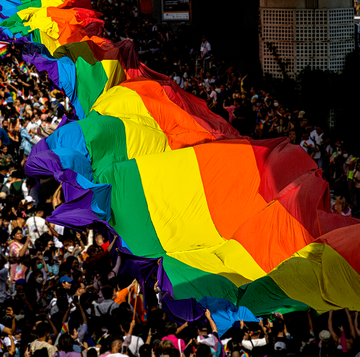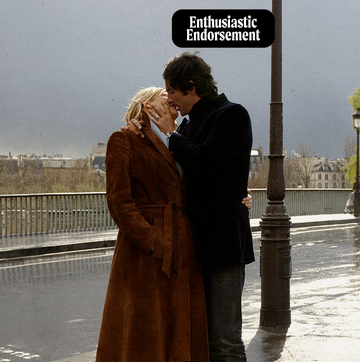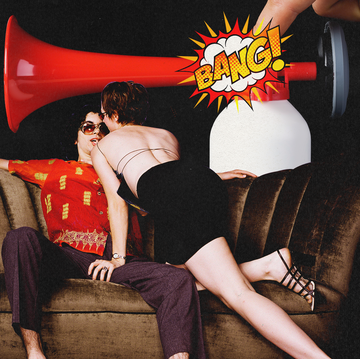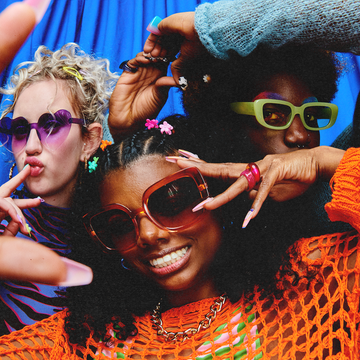For the last nine years, Keeley Shoup has been running a private practice out of her apartment where she charges $200 an hour to provide a unique type of somatic experience, one meant to help people reconnect with their bodies. During sessions, clients explore their existing relationship with boundaries, platonic touch, and emotional intimacy. They’re given the space to communicate what types of touch they want to engage in and are encouraged to ask for hugs, back scratches, and other nonsexual types of connection, including full-body cuddling.
Shoup is trained and certified to provide cuddle therapy services as a professional cuddler. And in a post-pandemic world, where lack of touch reportedly led to loneliness and anxiety, her work is more relevant than ever.
But what exactly is cuddle therapy? How do you become a professional cuddler, and can you actually make a living from it? When I sat down to video-chat with Shoup about her work, I got an immediate sense of who she is just through her Zoom background alone. Her space included a couch chock-full of inviting, fluffy pillows. She was open, casual, and comforting—everything I would personally look for in a professional cuddler.
Here’s what I learned about the intricate world of cuddle therapy and the people creating safe spaces for folks to get in touch (pun intended) with their bodies.
What do you think is the importance of this work? Why is touch so important?
I think as a society, it’s actually pretty hard for us to discover and be accepting of whatever it is we want. Our bodies innately know how to seek and find pleasurable sensation, right? But over time, that is socially dampened and programmed out of us in order to be situationally appropriate.
Part of the therapeutic process is giving my clients space to find what movement is natural to them and then supporting them along the way, especially when dealing with anxiety, which is a very dysregulated state of your nervous system. The power of touch creates immense symptom relief directly from a physiological aspect.
The social impact of touch includes the release of oxytocin, which activates the part of the brain that’s associated with belonging and bonding. So when someone feels really isolated or depressed and detached, it can help with a lot of those symptoms of anxiety that are tied to touch starvation.
Touching activates your parasympathetic nervous system and your limbic system to help your body get to a state of calm, relaxation, and regulation. We’re essentially using the dynamics of co-regulation (an interactive process that involves one person offering validating and warm responses to another during a stressful situation), so our bodies are naturally inclined to match or mirror the other humans in their environment. It’s those mirror neurons that we talk about a lot in neuroscience that are part of that symptom relief.
I also work with a lot of clients who have autism or ADHD who seek relational skill building that they can translate into their life, so that they can have more opportunities for communication, platonic touch, or emotional intimacy. We’re conditioning the body to know that state of belonging and regulation.
How did you get into this line of work?
Before I got into this industry, I worked in personal lines insurance. It was both an odd and completely random turn of events that happened late in life, although I believe I was always meant for and prepping for this job and just didn’t know it.
Growing up, I always volunteered in spaces where physical touch was involved. I would accompany my mom—who was a nurse—to the NICU where I would cuddle premature newborns who needed skin-to-skin contact, which can improve their immune system. In middle school, I spent time working in hospice, holding hands and sitting beside people going through their last days.
My family was concerned for my safety when I started this work, but they’re so supportive now. Funnily enough, we joke that I’ve been a professional cuddler since I was 7 years old, because my sisters used to pay me a quarter to draw on their back or run my fingers through their hair.
But one event really changed it all for me in 2013: a four-hour workshop designed by the nonprofit organization Cuddle Party. They taught me comprehensive communication tools, techniques, and theory around consent. I’d never had any kind of comprehensive—or really any—education around consent until that point. I spent two hours of that event crying, and it completely transformed my life from that moment on. Shortly after, I got certified and started my private practice in 2015.
What sort of courses did you have to take for your certification? Is there a professional cuddling license?
There’s no license to become a cuddle therapist. In fact, the word itself is not protected, so anyone can essentially call themselves a cuddle therapist. But there are many reputable institutions that have created formal education and training systems. I’m the CEO and co-owner of Cuddlist, which is an institute that teaches people how to do this work mindfully, safely, with conscientiousness to the client and to their own personal safety.
There’s also a great organization out of Los Angeles called Cuddle Sanctuary, Certified Cuddlers based out of Portland, Oregon, and a group in the UK called Certified Cuddlers International. They all offer their own certificates and training in this work and I’ve taken the mall. I also hold certifications in other therapeutic techniques like Internal Family Systems, a type of psychotherapy.
If you want to get into this work, you sort of need to create an à la carte educational curriculum for yourself, which is what I did.
What does the onboarding process look like with new clients?
I have a consultation with every new client where I determine if there’s an opportunity to work together. I also ask questions related to their personal and physical history to gain a better understanding of them, what their body has been through, and what impact my offerings might have on them. For example, some questions I ask are “Have you had a panic attack in the last year?” or “Do you have a history of any type of trauma I may potentially trigger?”
These questions are all optional to answer, but they help me get a sense of what they’re looking for. Some people see a cuddle therapist for immediate symptom relief from touch deprivation. For others, it looks more like coaching around boundaries of consent and relational skill building. So based on that consultation, if it seems like a really great fit, we book a session, which is typically around 90 minutes.
I often host in my space in Chicago, but I do travel to locations provided by the client, especially if they have accessibility issues. I’ve been almost splitting time back and forth from Los Angeles for the past two years, and I also do some work in Indianapolis.
My shortest session is an hour long, and the longest session I’ve had was about six hours with a returning client. My rates are $100 per hour for virtual sessions and $200 per hour for in-person sessions.
What does a session typically look like?
When clients arrive, they have a moment to get changed, get comfortable, and wash their hands. Then we sit down for about 5 to 10 minutes and check in about how they’re feeling, what emotions are coming up, and what intentions we want to set. This time is vital to reiterate our boundaries and establish mutual respect.
Then the bulk of the session is geared toward whatever we decided our intention was or whatever we’re working on. I allow them to determine what they need and lead the session, so each one is unique to the client. A session can range from no contact at all to full-body cuddles.
I always set an alarm that goes off 10 minutes before the end of each session, so we get that transition time to do a little reflection and close out.
To learn more about becoming a professional cuddler, check out Cuddlist. To book a consultation with Keeley, check out her website.
Varuna Srinivasan is a sexual health expert, writer, and speaker based in Brooklyn. For the past decade, she has worked on improving reproductive health access with organizations such as Doctors Without Borders, the Bill & Melinda Gates Foundation, Planned Parenthood, and more. Her work has appeared in the Washington Post, Paper, Health, and Parents, and folks from the NHS to Bumble to Serena Williams have recognized her work. You can keep up with her on Instagram.
